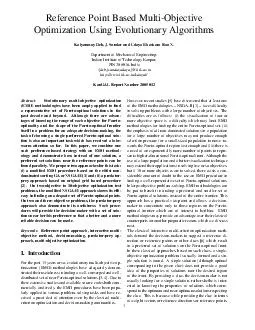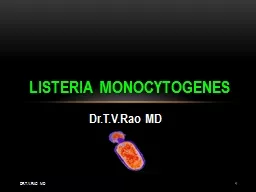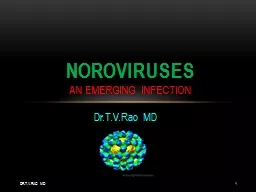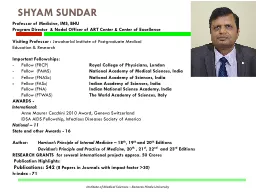PDF-Reference Point Based MultiObjecti Optimization Using Ev olutionary Algorithms Kalyanmoy
Author : conchita-marotz | Published Date : 2015-01-19
Department of Mechanical Engineering Indian Institute of echnology Kanpur PIN 208016 India debjsundar udaya iitka cin httpwww iitkacinkangal KanGAL Report Number
Presentation Embed Code
Download Presentation
Download Presentation The PPT/PDF document "Reference Point Based MultiObjecti Optim..." is the property of its rightful owner. Permission is granted to download and print the materials on this website for personal, non-commercial use only, and to display it on your personal computer provided you do not modify the materials and that you retain all copyright notices contained in the materials. By downloading content from our website, you accept the terms of this agreement.
Reference Point Based MultiObjecti Optimization Using Ev olutionary Algorithms Kalyanmoy: Transcript
Department of Mechanical Engineering Indian Institute of echnology Kanpur PIN 208016 India debjsundar udaya iitka cin httpwww iitkacinkangal KanGAL Report Number 2005012 Abstract Ev olutionary multiobjecti optimization EMO methodologies ha been ampl. brPage 9br Elcot Avenue SholinganallurChennai 119 Subba Rao Associates For Bookings Contact CEEBROS IMPERIALE Elcott Avenue Sholinganallur Chennai 119 012345556738495 0123455956944 2345595694343 Email ceebrosomrgmailcom A BCDEC required by the au Deb Kusum Das is Reader, Department of Economics, Ramjas College, University of Delhi and Consultant, Indian Council for Research on International Economic Relations (ICRIER). Gunajit Kalita is a Re By: Madison Johnson Spring 2015 . Deb puts on her red hat and skips up the hill to sit by the pond. .. She sits on a rock and gives the ducks a snack. . poopulatins. , communities . and ecosystems - lecture III. (Background for sections 9.1 and 9.4 of DEB3). Roger Nisbet. April . 2015. Remember my pet. Carbon flow and phosphorus cycling in a lake. Simplest DEB (DAB) model – “canonical community”. The Blue . “. 30. . minutes”. Presented to Charlottesville Camera Club . June 29, 2011 . © Deb . Snelson. 2011. Copyright 2011 Deb . Snelson. It’s All about “When”. Gorgeous Blue sky. Only lasts about . Listeria Monocytogenes. Dr.T.V.Rao MD. 1. What is Listeriosis. Listeriosis,. . a serious infection caused by eating food contaminated with the bacterium . Listeria Monocytogenes. , has recently been recognized as an important public health problem in the United States. The disease affects primarily persons of advanced age, pregnant women, new-borns, and adults with weakened immune systems. However, persons without these risk factors can also rarely be affected. . Noroviruses. an emerging infection. Dr.T.V.Rao MD. 1. Viruses infecting the gut. Viruses associated with gastroenteritis. . Rotaviruses. . Caliciviruses. . Noroviruses . . Sapoviruses. . Astroviruses. Collin . Bezrouk. 2-24-2015. Discussion Reference. Some of this material comes from . Spacecraft Trajectory Optimization. (Ch. 7) by Bruce Conway.. Optimization Problem Setup. Optimization problems require the following:. Gon. çalo. M. Marques. Jan . Baas. , . Starrlight. . Augustine. . and. Jean-. Lou. . Dorne. . The job:. Tools. for ERA . based. . on. DEB for. individuals. . and. . populations. single . compounds. 1. Shigella a Highly Infectious Bacteria . Shigella . is one of the most infectious of bacteria and ingestion of as few as . 100-200 . organisms. will cause disease. . Most individuals are infected with . Ranga Rodrigo. April 6, 2014. Most of the sides are from the . Matlab. tutorial.. 1. Introduction. Global Optimization Toolbox provides methods that search for global solutions to problems that contain multiple maxima or minima. . How to Transform a Good Book Into a Great Book Robin Perini Romance Writers of America, July 19, 2018 Take What You Want …and Leave the Rest What a writer … "wants is a set of rules on what to do and what not to do in writing fiction….when one begins to be persuaded that certain things must never be done in fiction and certain other things must always be done, one has entered the first stage of aesthetic arthritis, the disease that ends in pedantic rigidity and the atrophy of intuition.“ 11/08/20201 Nokia 2020SMSthree flowsNagaraja Nag Rao Boca Raton FL11/08/20202 Nokia 2020 Drawn by N RaoHigh level view11/08/20203 Nokia 2020 Drawn by N RaoMobile Originating SMS wi Program Director & Nodal Officer of ART Center & . Center of Excellence . Visiting Professor : . Jawaharlal Institute of Postgraduate Medical . Education & Research. . Important Fellowships:.
Download Document
Here is the link to download the presentation.
"Reference Point Based MultiObjecti Optimization Using Ev olutionary Algorithms Kalyanmoy"The content belongs to its owner. You may download and print it for personal use, without modification, and keep all copyright notices. By downloading, you agree to these terms.
Related Documents














